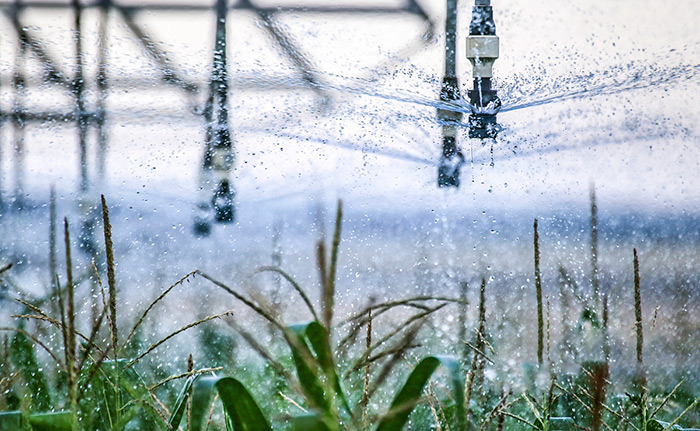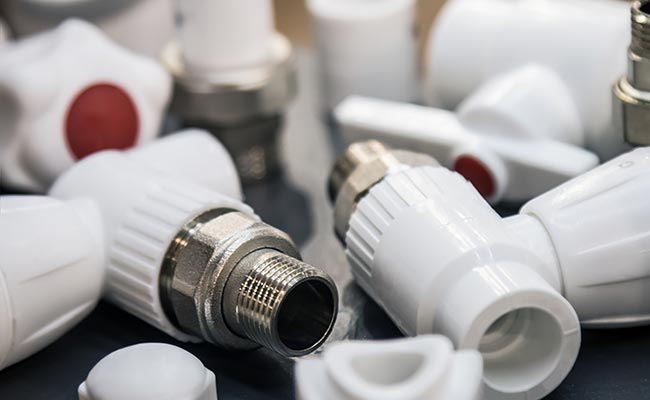La Proksima Oriento spertas rimarkindan konstruhaŭson. Urbigo kaj infrastrukturprojektoj transformas la regionon, precipe en dezertaj regionoj. Ekzemple:
- La merkato por infrastrukturkonstruado en Mezoriento kaj Afriko kreskas je pli ol 3.5% ĉiujare.
- Sauda Arabio sole havas pli ol 5 200 aktivajn projektojn valorajn je 819 miliardoj da dolaroj, reprezentante 35% de la totala projekta valoro de la Konsilio de Golfa Kunlaboro.
Ĉi tiu rapida kresko kreas unikajn defiojn, precipe en aridaj medioj. Mi vidis kiel UPVC-tuboj de la Proksima Oriento fariĝis esencaj por superi ĉi tiujn obstaklojn. Ilia fortikeco kaj efikeco igas ilin idealaj por dezertaj kondiĉoj, kie ekstrema varmo kaj akvomanko postulas novigajn solvojn.
Ŝlosilaj Konkludoj
- La Proksima Oriento konstruas multajn novajn urbojn kaj projektojn en dezertoj.
- Konstrui en dezertoj estas malfacile pro varmo kaj manko de akvo.
- UPVC-tuboj en la Mezoriento estas fortikaj kaj ne rustas.
- Ĉi tiuj tuboj daŭras pli ol 50 jarojn, do ili bezonas malpli da riparoj.
- UPVC-tuboj ŝparas monon per tio, ke ili estas facile purigeblaj kaj instaleblaj.
- Grandaj registaraj projektoj pliigas la uzon de UPVC-tuboj.
- Ĉi tiuj tuboj helpas ŝpari akvon per ĉesigo de likoj kaj malpli da malŝparo.
- Nova teknologio plibonigas UPVC-tubojn por la hodiaŭaj konstrubezonoj.
Defioj de Dezerta Konstruado
Dezerta konstruado prezentas unikajn defiojn, kiuj postulas novigajn solvojn. Mi observis kiel ĉi tiuj defioj efikas sur ĉiun etapon de projekto, de planado ĝis efektivigo. Ni esploru la ŝlosilajn problemojn alfrontatajn en ĉi tiuj severaj medioj.
Ekstremaj Temperaturoj
La ekstrema varmo de la dezerto kreas signifajn obstaklojn por konstruado. Temperaturoj ofte superas 50 °C, kaŭzante trovarmiĝon de ekipaĵo kaj moliĝon de asfalto. Laboristoj alfrontas riskojn de dehidratiĝo kaj varmobato, kiuj postulas striktajn sekurecajn rimedojn. Materialoj ankaŭ suferas sub ĉi tiuj kondiĉoj. Ekzemple, betono povas fendiĝi pro rapidaj temperaturŝanĝoj, kaj ŝtalo povas korodi pli rapide en la varmo. Por kontraŭbatali ĉi tiujn problemojn, mi vidis projektojn adopti specialajn materialojn kiel ŝtalbetonajn miksaĵojn kaj reciklitan ŝtalon, kiuj estas pli daŭremaj en tiaj klimatoj.
Krome, novigaj konstrumetodoj helpas mildigi la efikojn de varmo. Teknikoj kiel rampata tero kaj adoba konstruado stabiligas endomajn temperaturojn minimumigante karbonajn emisiojn. Ĉi tiuj aliroj ne nur traktas la defiojn de ekstrema varmo, sed ankaŭ konformas al daŭripovaj celoj en la regiono.
Akvomalabundeco
Akvomanko estas alia kritika defio en dezerta konstruado. Kun limigitaj dolĉakvaj fontoj, projektoj devas dependi de sensaligita akvo aŭ reciklita kloakaĵo. Tio pliigas kostojn kaj malfaciligas loĝistikon. Mi rimarkis, ke akvo-intensaj procezoj, kiel ekzemple betonmiksado kaj polvosubpremado, postulas zorgeman planadon por eviti malŝparon.
Efikaj akvo-administradaj sistemoj ludas gravan rolon ĉi tie. Ekzemple, UPVC-tuboj el la Proksima Oriento estas vaste uzataj en irigaciaj kaj akvodistribuaj retoj. Ilia daŭreco kaj rezisto al korodo igas ilin idealaj por transporti akvon en aridaj regionoj. Ĉi tiuj tuboj certigas minimuman elfluon, konservante altvalorajn akvoresursojn samtempe subtenante grandskalajn konstruprojektojn.
Grundo kaj Mediaj Kondiĉoj
Dezerta grundo kaj mediaj kondiĉoj aldonas plian tavolon de komplekseco. La grundo ofte enhavas altajn nivelojn de kloridoj kaj sulfatoj, kiuj povas difekti strukturojn laŭlonge de la tempo. Mi vidis kiel tio akcelas la korodon de ŝtalstangoj, pliigante la riskon de fendado en betono. Krome, la loza, sabla tereno malfaciligas la establon de stabilaj fundamentoj.
Por trakti ĉi tiujn problemojn, konstruprojektoj uzas progresintajn teknikojn kaj materialojn. Ekzemple, geotekstiloj stabiligas la grundon, dum specialaj tegaĵoj protektas strukturojn kontraŭ kemia damaĝo. Malproksimaj lokoj ankaŭ prezentas loĝistikajn defiojn, postulante efikan transportadon de materialoj kaj personaro. Malgraŭ ĉi tiuj obstakloj, novigaj solvoj daŭre pelas progreson en dezerta konstruado.
Avantaĝoj de UPVC-tuboj el Mezoriento
Daŭreco kaj Longviveco
Mi mem vidis kiel daŭripovo ludas kritikan rolon en konstruado en dezerto. Mezorientaj UPVC-tuboj elstaras en ĉi tiu areo. Ĉi tiuj tuboj estas desegnitaj por elteni severajn kondiĉojn, kie metalaj tuboj difektiĝus. Ekzemple:
- Ili rezistas korodon, evitante la ruston kaj erozion, kiuj ofte turmentas metalajn alternativojn.
- Ilia rigida kaj stabila strukturo plibonigas la mekanikan forton, igante ilin fidindaj por longdaŭra uzo.
Kio plej impresas min estas ilia vivdaŭro. Ĉi tiuj tuboj povas daŭri pli ol 50 jarojn, eĉ en malfacilaj medioj. Ĉi tiu longdaŭreco reduktas la bezonon de oftaj anstataŭigoj, kio estas aparte utila en malproksimaj dezertaj lokoj. Krome, iliaj malaltaj bontenaj postuloj igas ilin praktika elekto por grandskalaj projektoj. Uzante ĉi tiujn tubojn, mi rimarkis kiel konstruteamoj povas koncentriĝi pli pri progreso kaj malpli pri riparoj.
Kostefikeco
Kosto ĉiam estas grava faktoro en konstruado, kaj mi trovis, ke UPVC-tuboj el Mezoriento ofertas signifajn ŝparojn. Ilia rezisto al skvamado kaj biologia malpuriĝo minimumigas purigadon, kio reduktas bontenajn elspezojn. Kun la tempo, tio tradukiĝas al konsiderindaj ŝparoj por grandskalaj projektoj.
Alia avantaĝo estas ilia longa servodaŭro. Male al materialoj, kiuj rapide putriĝas, ĉi tiuj tuboj konservas sian integrecon dum jardekoj. Ĉi tiu daŭreco reduktas la oftecon de anstataŭigoj, ŝparante kaj tempon kaj monon. Mi ankaŭ observis, ke ilia facileco de instalado plue plibonigas kostefikecon. Konstruteamoj povas kompletigi projektojn pli rapide, kio malaltigas laborkostojn kaj tenas la buĝetojn laŭplane.
Malpeza kaj Facila Instalo
Unu el la elstaraj trajtoj de UPVC-tuboj el Mezoriento estas ilia malpeza naturo. Tio igas ilin nekredeble facile manipuleblaj, eĉ en malproksimaj dezertaj lokoj. Mi vidis kiel tio reduktas transportkostojn kaj simpligas loĝistikon. Ekzemple, malpli da rimedoj estas bezonataj por movi ĉi tiujn tubojn al konstruejoj, kio estas grandega avantaĝo en areoj kun limigita infrastrukturo.
Ilia versatileco ankaŭ meritas mencion. Ĉi tiuj tuboj povas esti uzataj por diversaj aplikoj, de akvodistribuado ĝis irigaciaj sistemoj. Ĉi tiu adaptiĝemo igas ilin preferata elekto por diversaj konstrubezonoj. Uzante malpezajn UPVC-tubojn, teamoj povas raciigi siajn operaciojn kaj atingi pli grandan efikecon.
Registaraj Iniciatoj kaj Mega Projektoj Pelantaj Postulon
Viziaj Projektoj en la Proksima Oriento
Mi atestis kiel viziaj projektoj en la Proksima Oriento transformas la infrastrukturon de la regiono. Landoj kiel Sauda Arabio kaj UAE gvidas la agon per ambiciaj evoluigoj. Ekzemple, la projekto NEOM de Sauda Arabio, iniciato por inteligentaj urboj je 500 miliardoj da dolaroj, celas krei daŭripovan urban medion en la dezerto. Simile, la urbo Masdar de UAE fokusiĝas al renovigebla energio kaj ekologie amika konstruado. Ĉi tiuj projektoj postulas novigajn materialojn, kiuj povas elteni severajn kondiĉojn samtempe subtenante daŭripovajn celojn.
Laŭ mia sperto, UPVC-tuboj el la Proksima Oriento ludas gravan rolon en ĉi tiuj evoluoj. Ilia daŭreco kaj efikeco igas ilin idealaj por grandskalaj projektoj. Ĉu temas pri akvodistribuaj retoj aŭ subteraj drenadsistemoj, ĉi tiuj tuboj certigas fidindan funkciadon. Mi vidis kiel ilia uzo reduktas bontenajn bezonojn, permesante al projektteamoj koncentriĝi pri atingado de siaj ambiciaj celoj.
Sensaligo kaj Akva Infrastrukturo
Akvomalabundeco restas urĝa problemo en la Proksima Oriento. Registaroj investas multe en sensaligajn instalaĵojn kaj akvinfrastrukturon por trakti ĉi tiun defion. Ekzemple, Sauda Arabio funkciigas kelkajn el la plej grandaj sensaligaj instalaĵoj de la mondo, provizante dolĉakvon al milionoj. UAE kaj Kataro ankaŭ vastigas siajn sensaligajn kapacitojn por kontentigi kreskantan postulon.
Mi rimarkis, ke UPVC-tuboj el la Proksima Oriento estas esencaj por ĉi tiuj klopodoj. Ilia rezisto al korodo igas ilin perfektaj por transporti sensaligitan akvon, kiu povas esti tre sala. Ĉi tiuj tuboj ankaŭ minimumigas elfluadon, konservante akvoresursojn en aridaj regionoj. Per la enkorpigo de progresintaj materialoj kiel UPVC, registaroj povas konstrui efikajn kaj daŭripovajn akvosistemojn, kiuj subtenas kaj urbajn kaj kamparajn komunumojn.
Politikoj Subtenantaj Daŭripovajn Materialojn
Registaroj en la Proksima Oriento pli kaj pli prioritatigas daŭripovon en konstruado. Politikoj nun instigas la uzon de ekologie sanaj materialoj por redukti median efikon. Ekzemple, la Vizio 2030 de Sauda Arabio emfazas verdajn konstrupraktikojn kaj renovigeblan energion. La Regularo pri Verda Konstruado de UAE postulas la uzon de daŭripovaj materialoj en novaj projektoj.
Mi observis kiel ĉi tiuj politikoj pelas la postulon je materialoj kiel Mezorientaj UPVC-tuboj. Ĉi tiuj tuboj konformas al daŭripovaj celoj pro sia longa vivdaŭro kaj recikleblo. Elektante UPVC, konstruteamoj povas plenumi reguligajn postulojn samtempe kontribuante al media konservado. Ĉi tiu ŝanĝo al daŭripovaj praktikoj ne nur profitigas la planedon, sed ankaŭ certigas longdaŭrajn kostŝparojn por programistoj.
Daŭripovo kaj Akvoŝparado kun UPVC-Tuboj
Mediaj Avantaĝoj de UPVC-Tuboj
Mi ĉiam impresiĝis pri kiel UPVC-tuboj kontribuas al media daŭripovo. Male al tradiciaj materialoj, ĉi tiuj tuboj ofertas plurajn ekologie amikajn avantaĝojn, kiuj kongruas kun tutmondaj klopodoj redukti malŝparon.
- UPVC-tuboj estas 100% recikleblaj. Ĉe la fino de sia vivciklo, ili povas esti reciklitaj en novajn produktojn, minimumigante rubodeponejajn rubojn.
- Ilia produktada procezo konsumas malpli da energio kompare kun metalaj tuboj, reduktante la ĝeneralan karbonan spuron.
Ĉi tiuj trajtoj faras UPVC-tubojn daŭripova elekto por konstruado en dezerto. Uzante recikleblajn materialojn, ni povas subteni la cirklan ekonomion kaj antaŭenigi respondecan rimedan administradon. Mi vidis kiel ĉi tiu aliro profitigas kaj la medion kaj la konstruindustrion.
Efika Akvo-Administrado
Akvomastrumado estas kritika en aridaj regionoj, kaj mi observis kiel UPVC-tuboj elstaras en ĉi tiu areo. Ilia daŭreco kaj rezisto al korodo igas ilin idealaj por transporti akvon trans longajn distancojn. Male al metalaj tuboj, kiuj ofte rustas kaj erozias, UPVC-tuboj konservas sian integrecon dum jardekoj.
Mi ankaŭ rimarkis kiel ilia malpeza konstruo simpligas instaladon kaj bontenadon. Tio reduktas laborkostojn kaj certigas ĝustatempan kompletigon de la projekto. En agrikulturaj irigaciaj sistemoj, ĉi tiuj tuboj provizas fidindan aliron al grundakvo, subtenante manĝaĵproduktadon en dezertaj regionoj. Ilia longa vivdaŭro plue plibonigas efikecon reduktante la bezonon de oftaj anstataŭigoj.
Elektante UPVC-tubojn, konstruteamoj povas konstrui akvodistribuajn retojn, kiuj ŝparas resursojn kaj funkcias efike. Ĉi tio estas aparte grava en la Proksima Oriento, kie akvomalabundeco restas urĝa problemo.
Kontribuo al Regionaj Daŭripovaj Celoj
La Proksima Oriento havas ambiciajn celojn pri daŭripovo, kaj mi vidis kiel UPVC-tuboj ludas rolon en ilia atingado. Registaroj tra la regiono prioritatigas ekologie amikajn materialojn en konstruprojektoj. Ekzemple, la Vizio 2030 de Sauda Arabio emfazas verdajn konstrupraktikojn, dum la Regularoj pri Verda Konstruado de UAE instigas la uzon de daŭripovaj materialoj.
Mezorientaj UPVC-tuboj perfekte konformas al ĉi tiuj iniciatoj. Ilia recikleblo kaj longa vivdaŭro reduktas median efikon, helpante programistojn plenumi reguligajn postulojn. Mi observis kiel ĉi tiuj tuboj kontribuas al akvoŝparaj klopodoj minimumigante elfluojn en distribuaj sistemoj. Ĉi tio ne nur subtenas daŭripovajn celojn, sed ankaŭ certigas longdaŭrajn ŝparojn por infrastrukturprojektoj.
Per integrado de UPVC-tuboj en konstruadon, ni povas krei pli daŭrigeblan estontecon por la regiono. Iliaj mediaj avantaĝoj kaj efikeco igas ilin esenca komponanto de moderna infrastrukturo.
Estonta Perspektivo por Mezorientaj UPVC-Tuboj
Merkata Kresko kaj Urbigo
Mi rimarkis, ke la merkato de UPVC-tuboj en la Proksima Oriento havas konstantan kreskotrajektorion. Ĉi tiu kresko devenas de la daŭra infrastrukturevoluigo kaj agrikulturaj investoj en la regiono. Urbigo ludas gravan rolon ĉi tie. Urboj rapide kreskas, kaj novaj urbaj centroj aperas por akomodi kreskantajn loĝantarojn. Ĉi tiuj evoluoj postulas fortikajn akvodistribuajn kaj drenadajn sistemojn, kie UPVC-tuboj elstaras pro sia fortikeco kaj efikeco.
La sekva jardeko aspektas promesplena por ĉi tiu merkato. Registaroj prioritatigas infrastrukturprojektojn por subteni urbigon, kio kreas konstantan postulon je fidindaj materialoj. Mi observis kiel UPVC-tuboj plenumas ĉi tiujn bezonojn ofertante longdaŭrajn solvojn por akvoadministrado kaj konstruado. Ilia kapablo elteni severajn dezertajn kondiĉojn igas ilin nemalhaveblaj en ĉi tiu kunteksto.
Novigoj en UPVC-Teknologio
Teknologiaj progresoj en UPVC-fabrikado transformas la konstruan pejzaĝon. Mi vidis kiel novigoj kiel plibonigitaj tubtegaĵoj kaj plibonigitaj materialaj formuloj pliigas la rendimenton de ĉi tiuj tuboj. Ekzemple, pli novaj UPVC-tuboj nun ofertas pli bonan reziston al ekstremaj temperaturoj kaj kemia eksponiĝo. Ĉi tiuj trajtoj igas ilin eĉ pli taŭgaj por dezertaj medioj.
Alia ekscita evoluo estas la integrado de inteligentaj teknologioj. Kelkaj UPVC-sistemoj nun inkluzivas sensilojn por monitori akvofluon kaj detekti likojn. Ĉi tiu novigo ne nur plibonigas efikecon, sed ankaŭ subtenas akvoŝparajn klopodojn. Mi kredas, ke ĉi tiuj progresoj plu solidigos la rolon de UPVC-tuboj en modernaj infrastrukturprojektoj. Restante ĉe la avangardo de teknologio, la industrio certigas, ke ĉi tiuj tuboj restas ĉefa elekto por programistoj.
Strategia Graveco por Regiona Disvolviĝo
UPVC-tuboj ludas gravan rolon en atingado de la strategiaj evoluaj celoj de landoj en la Proksima Oriento. Mi observis kiel ili subtenas efikajn irigaciajn sistemojn, kiuj estas esencaj por agrikultura produktiveco. Ĉi tio estas aparte grava en aridaj regionoj, kie akvomanko minacas nutraĵsekurecon. Ebligante fidindan akvodistribuon, ĉi tiuj tuboj kontribuas al ekonomia stabileco kaj daŭripovo.
Urba ekspansio ankaŭ elstarigas la gravecon de UPVC-tuboj. Kreskantaj urboj postulas ampleksan infrastrukturon, inkluzive de akvoprovizaj retoj kaj kloaksistemoj. Mi vidis kiel ĉi tiuj tuboj faciligas daŭripovan disvolviĝon minimumigante elfluojn kaj reduktante bontenadkostojn. Ilia adaptiĝemo igas ilin ŝlosila komponanto en projektoj, kiuj celas balanci kreskon kun media konservado.
La strategia valoro de UPVC-tuboj etendiĝas preter individuaj projektoj. Ili akordiĝas kun regionaj celoj kiel la Vizio 2030 de Sauda Arabio, kiu emfazas daŭripovon kaj novigadon. Integrante ĉi tiujn tubojn en infrastrukturplanojn, landoj de la Proksima Oriento povas konstrui estontecon, kiu estas kaj rezistema kaj ekologie amika.
La konstruhaŭso de la Proksima Oriento transformis la regionon, sed ĝi ankaŭ alportas unikajn defiojn kiel ekstremajn temperaturojn, akvomalabundecon kaj severajn grundkondiĉojn. Mi vidis kiel ĉi tiuj obstakloj postulas novigajn solvojn, precipe en dezertaj medioj. UPVC-tuboj de la Proksima Oriento pruviĝis esti revoluciaj. Ilia fortikeco, kostefikeco kaj daŭripovo igas ilin nemalhaveblaj por modernaj infrastrukturprojektoj.
Antaŭenrigardante, mi kredas, ke la postulo je ĉi tiuj tuboj nur kreskos. La fokuso de la regiono pri urba ekspansio kaj efikaj irigaciaj sistemoj elstarigas ilian gravecon. Dum urboj kreskas kaj media konscio pliiĝas, UPVC-tuboj ludos gravan rolon en subteno de daŭripova disvolviĝo. Ilia kapablo kontentigi la bezonojn de aridaj regionoj certigas, ke ili restas bazŝtono de infrastrukturkresko en la Proksima Oriento.
Oftaj Demandoj
Kio taŭgas UPVC-tubojn por konstruado en dezerto?
UPVC-tuboj rezistas ekstreman varmon kaj korodon, igante ilin idealaj por dezertaj medioj. Mi vidis kiel ilia daŭreco certigas longdaŭran funkciadon, eĉ en severaj kondiĉoj. Ilia malpeza naturo ankaŭ simpligas transportadon kaj instaladon en malproksimaj regionoj.
Kiel UPVC-tuboj kontribuas al akvoŝparado?
UPVC-tuboj minimumigas akvoperdon per sia likorezista dezajno. Mi rimarkis kiel ilia glata interna surfaco reduktas frotadon, certigante efikan akvofluon. Ĉi tiu trajto estas decida por aridaj regionoj kie ĉiu akvoguto gravas.
Ĉu UPVC-tuboj estas ekologie sanaj?
Jes, UPVC-tuboj estas 100% recikleblaj. Mi observis kiel ilia produktadprocezo konsumas malpli da energio kompare kun metalaj alternativoj. Ilia longa vivdaŭro ankaŭ reduktas malŝparon, konforme al daŭripovaj celoj en la Proksima Oriento.
Ĉu UPVC-tuboj povas pritrakti sensalitan akvon?
Absolute. UPVC-tuboj rezistas la korodajn efikojn de sala akvo, kio igas ilin perfektaj por transporti sensaligitan akvon. Mi vidis ilin vaste uzataj en akvinfrastrukturprojektoj tra la Proksima Oriento.
Kiuj estas la ĉefaj aplikoj de UPVC-tuboj en konstruado?
UPVC-tuboj estas multflankaj. Mi vidis ilin uzataj en akvodistribuado, irigaciaj sistemoj kaj drenadretoj. Ilia adaptiĝemo igas ilin preferata elekto por diversaj konstrubezonoj en la regiono.
Kiel UPVC-tuboj reduktas konstrukostojn?
Ilia malpeza dezajno malaltigas transportajn kostojn. Mi rimarkis kiel ilia facila instalado akcelas projektojn, reduktante laborkostojn. Ilia longa vivdaŭro ankaŭ minimumigas anstataŭigajn kaj bontenadajn elspezojn, ofertante signifajn ŝparojn laŭlonge de la tempo.
Ĉu UPVC-tuboj konformas al daŭripovpolitikoj en la Proksima Oriento?
Jes, ili konformas al regionaj daŭripovaj celoj. Mi observis kiel registaroj prioritatigas ekologie amikajn materialojn kiel UPVC-tubojn en projektoj. Ilia recikleblo kaj efikeco igas ilin preferata elekto por iniciatoj pri ekologia konstruado.
Kiuj novigoj plibonigas la teknologion de UPVC-tuboj?
Lastatempaj progresoj inkluzivas plibonigitajn materialajn formulojn kaj inteligentajn sensilojn por likdetekto. Mi vidis kiel ĉi tiuj novigoj plibonigas rendimenton kaj efikecon, igante UPVC-tubojn eĉ pli fidindaj por modernaj infrastrukturprojektoj.
Afiŝtempo: 25-a de februaro 2025









